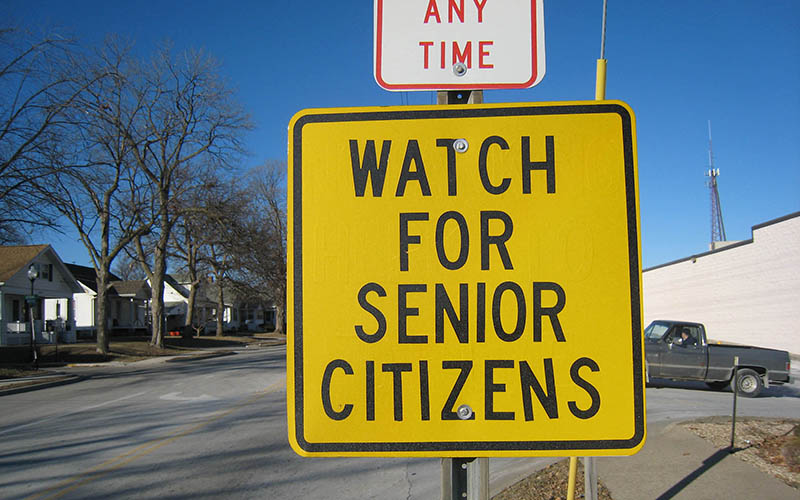
Demographers attribute the sharp rise in Arizona’s average age to falling birth rates and a rise in young people moving out and older residents moving in. Arizona is still relatively young compared to other states, but it’s gaining fast. (Photo by Ethan Prater/Creative Commons)
WASHINGTON – Arizona continues to be relatively young compared with the rest of the U.S., but it saw one of the nation’s biggest jumps in average age from 2010 to 2018, according to new data from the Census Bureau.
The state’s median age grew 2 years in that period, from 35.9 to 37.9 years, according to the 2018 Population Estimates released by the bureau Thursday. The national average during the same period rose 1 year, from 37.2 to 38.2 years, the report said.
Arizona demographers attribute the change to increases in the number of older people moving in to the state and younger people moving out, which is leading to a lower birth rate.
They say another factor could be the relatively large minority share of the state’s population: The national drop in nonwhite birth rates and the rise in average ages for nonwhites both exceeded those for whites, which could be helping to drive Arizona’s average age up.
“The people who migrate in to our state tend to be slightly older than the people who migrate out of our state,” said Jim Chang, Arizona state demographer. “The median age of people who move to Arizona is around 33.5, and the people who move out of Arizona to other states are about 30.5, a three-year difference.”
From 2010 to 2018, Arizona’s average age increase of 2 years was the second-largest in the nation, trailing only Maine, which saw a 2.2 year increase in average age in that time, according to Census data.
Although Maine was then, and is now, the oldest state in the nation, Arizona has been climbing up the ranks.
The Census report shows that Arizona was the 43rd-youngest state in the nation in 2010, just below Mississippi at 36 years and just above Louisiana at 35.8 years. By 2018, however, Arizona was tied with Indiana as 35th-youngest state in the nation.
With people in their prime childbearing ages leaving the state, Chang said, there are not as many newborns to counter the older residents moving in.
“Throughout the nation, birth rates dropped, but it has dropped more in Arizona than the nation as a whole,” Chang said. “If we don’t have a lot of births, obviously, those people weigh down our median age.”
David Plane, a professor at the University of Arizona School of Geography and Development, said the latest Census numbers show that children younger than 5 make up 7.13% of the state’s population in 2010, but that fell to 6.08% in 2018. People 65 and older rose from 13.8% to 17.54% of the state population over the same period, he said.
Arizona’s birth rate fell from 13.2 births per 1,000 people in 2010 to 11.2 per 1,000 in 2017, the most recent year for which numbers are available from the Arizona Department of Health Services. The department said the number of births in the state fell from 82,053 in 2010 to 81,664 in 2017.
Chang said the rate is down sharply from the peak year of 2007, when a birth rate of 16 per 1,000 residents resulted in 102,687 babies born in the state.
Plane said it’s not just overall birth rate that is important to the state’s median age, “but the composition of the population, it’s what percentage are in different categories.”
He was quick to note that the declines are particularly sharp in minority groups nationwide. The Census Bureau reported that Hispanics and Native Americans, who account for a large percentage of Arizona’s population, both had a median age increase of 2.2 years.
“The white population increased by one (year in average age), but all the other groups have increased by more,” he said
Plane, who studies population geography, said younger people are gravitating toward such cities as Seattle, Denver and New York, while those coming here are being drawn by affordable housing.